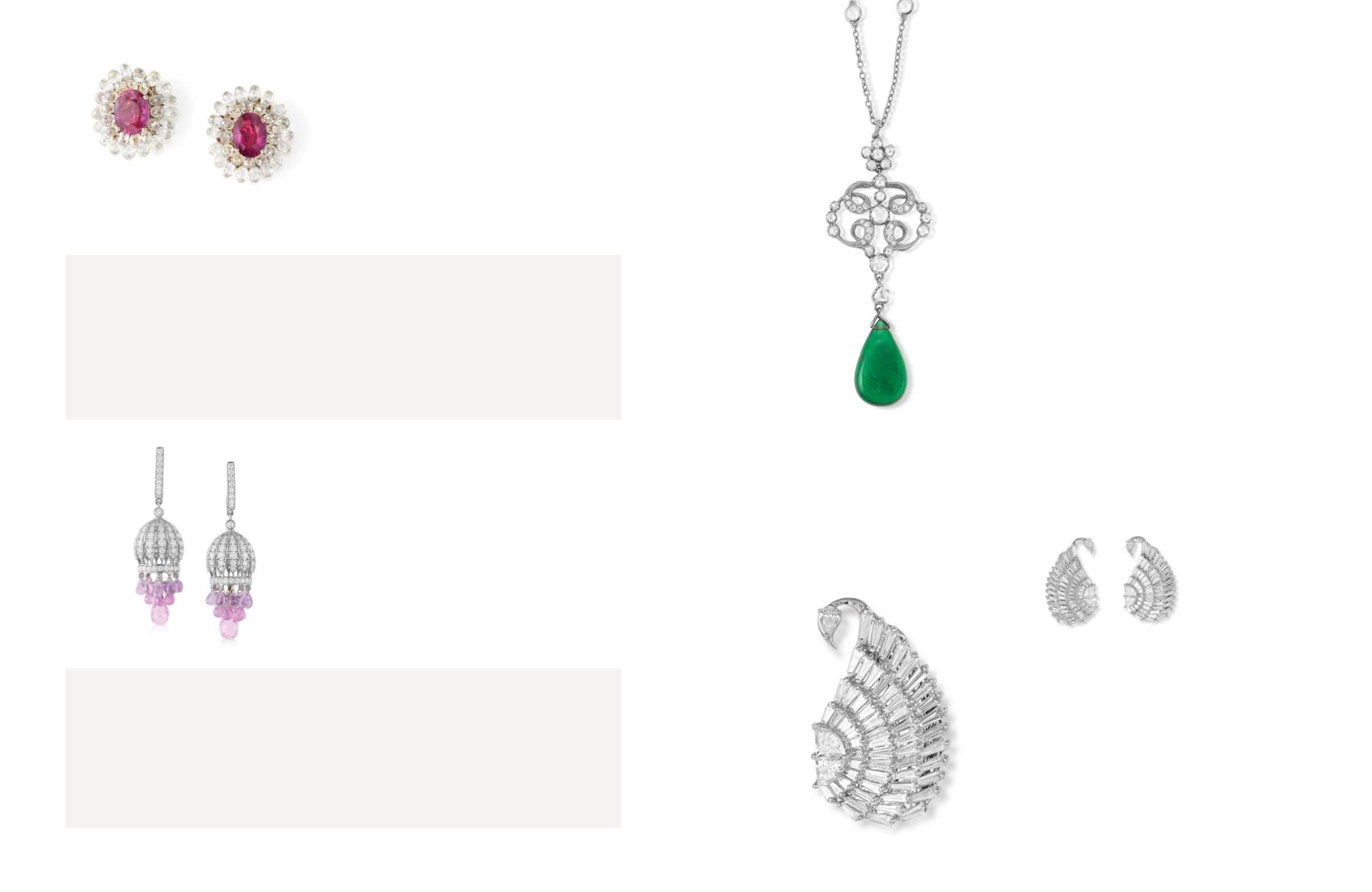

102
103
133
PAIR OF PINK SAPPHIRE AND
DIAMOND EARRINGS
Designed as a stylised hemisphere set with full‒cut
diamonds, suspending three‒tier pink sapphire drops,
terminating to a diamond set hoop, mounted in gold.
Diamond: 4.64 carats
Pink sapphire: 12.57 carats
Gross weight: 17.15 grams
$ 3,930 ‒ 5,360
Rs 2,75,000 ‒ 3,75,000
134
DIAMOND AND EMERALD NECKLACE
Designed as a scrolling floral motif, set with full‒cut
diamonds with a flower‒head surmount, suspending
an oval‒shaped emerald bead. Stamped ‘750’ on the
clasp of the chain.
Emerald: 8.27 carats
Diamonds: 1.73 carats
Gross weight: 8.57 grams
$ 7,145 ‒ 10,000
Rs 5,00,000 ‒ 7,00,000
135
PAIR OF DIAMOND EARRINGS
Each is a stylised paisley design with four rows of
baguette diamonds, with each row raised slightly
compared to the previous row, mounted in white gold.
Diamond: 6.08 carats
Gross weight: 15.10 grams
$ 6,430 ‒ 9,290
Rs 4,50,000 ‒ 6,50,000
132
PAIR OF RUBY AND DIAMOND
EARRINGS
Each centring on an oval‒shaped ruby with a surround
of briolette diamonds, mounted in gold. Stamped ‘18K’.
Ruby: 2.27 carats
Diamond: 6.53 carats
Gross weight: 6.71 grams
$ 7,860 ‒ 9,290
Rs 5,50,000 ‒ 6,50,000
O
riginally reserved for royalty and aristocracy, Briolettes are pear-shaped or oval stones
that are cut in extended triangular or hexagonal facets, which cover the entire surface of
the stone or diamond. This allows the surface to reflect light from all sides, radiating greater
fire and colour. One of the most exquisite and oldest forms of cutting, the briolette dates back
800 years and come in a wide range of shapes and sizes, from long, slender teardrops to small
beads. One of the most famous examples of this cut is a 275‒carat diamond necklace containing
10 briolette-shaped gems that Napoleon Bonaparte gifted to Empress Marie Louise in 1811.
W
ith advanced technology, a diamond could be cut to perfection to achieve maximum
brilliance and shine. For some time, the older cuts, which produced diamonds with
irregular shapes, were undervalued in the market in comparison to the modern laser technology
cuts. However, recent market trends show a higher demand for the antique cuts, with customers
appreciating them for their history, charm and organic forms that are lacking in the uniform
modern cuts.


















